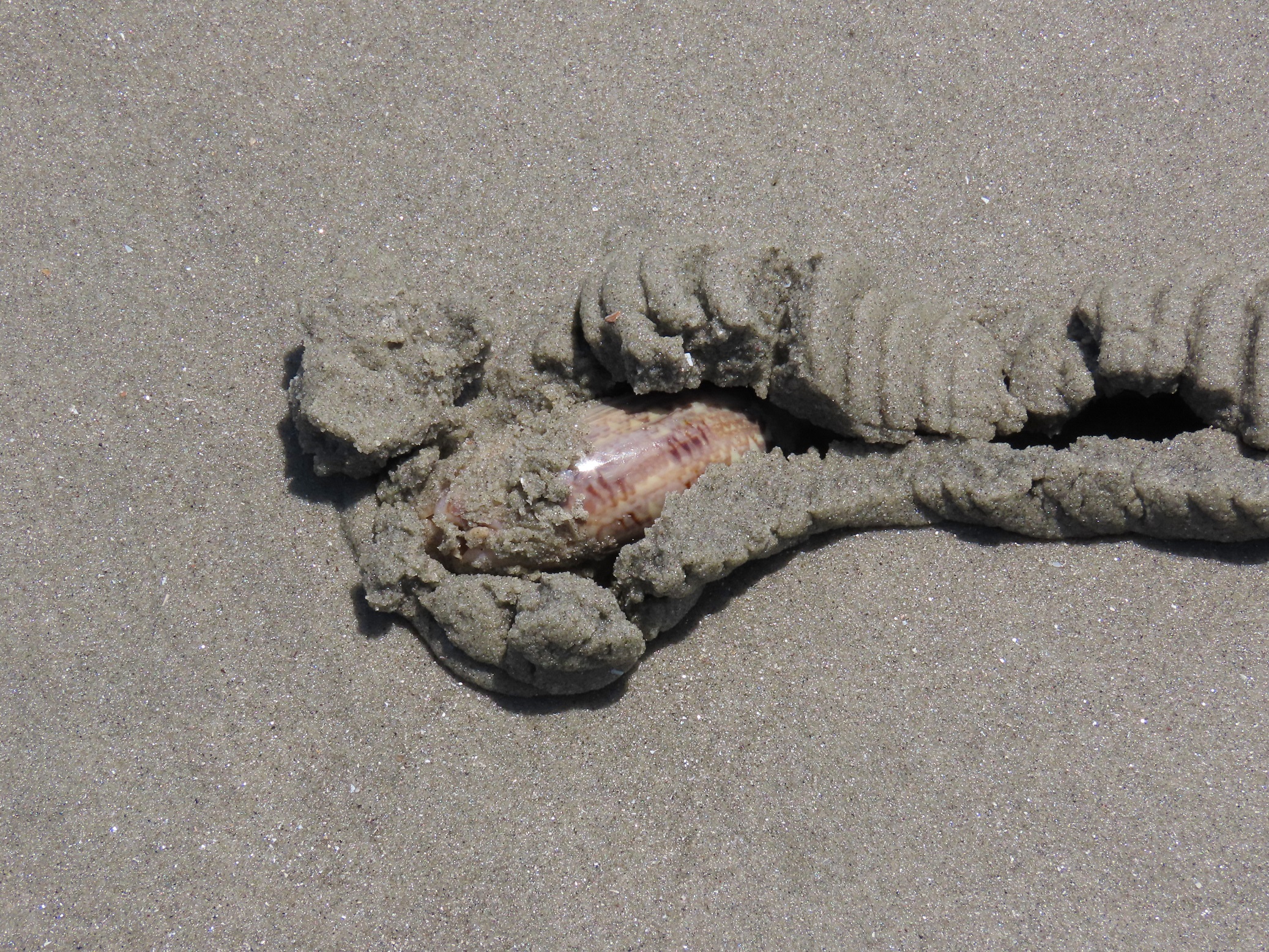
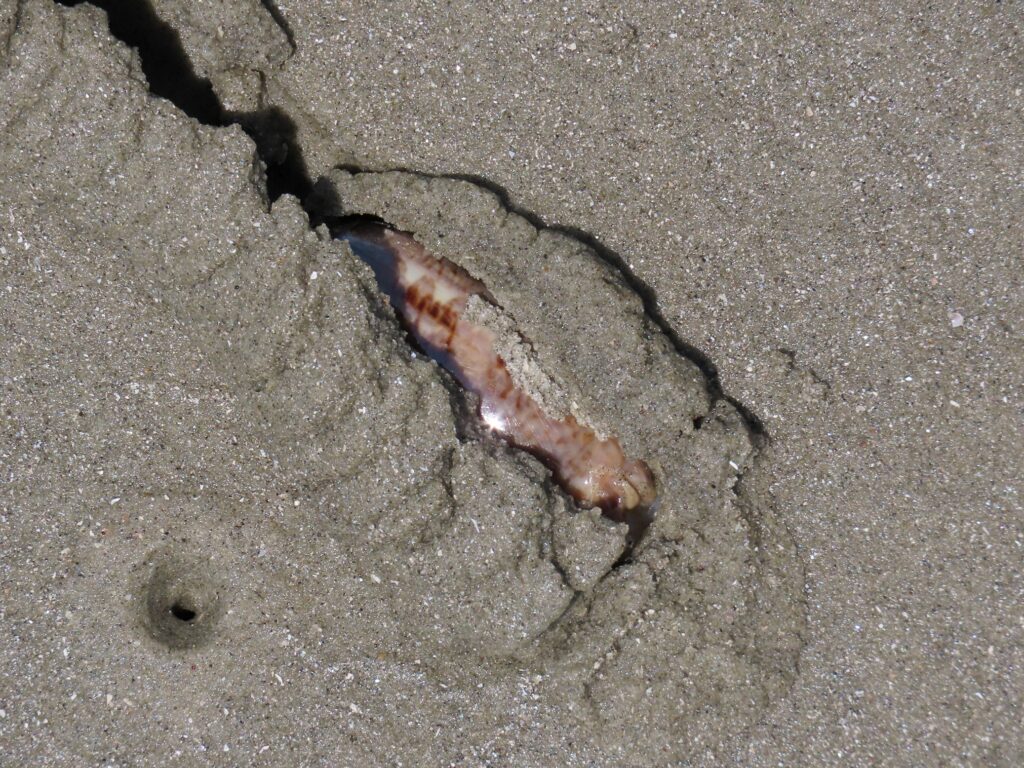
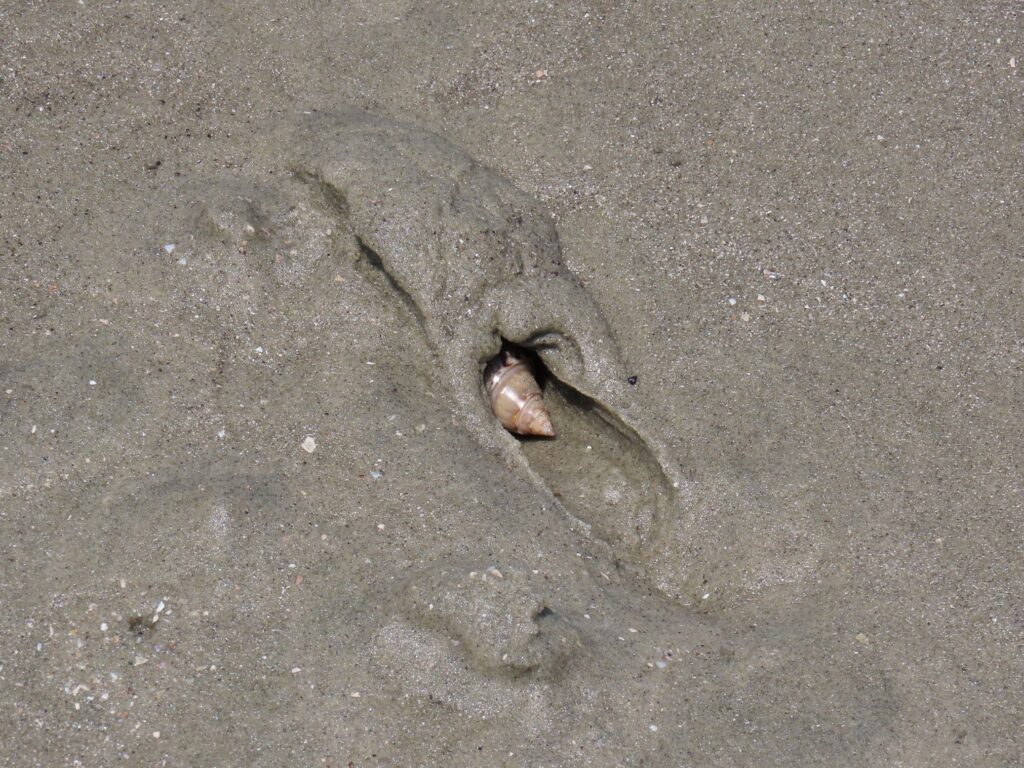
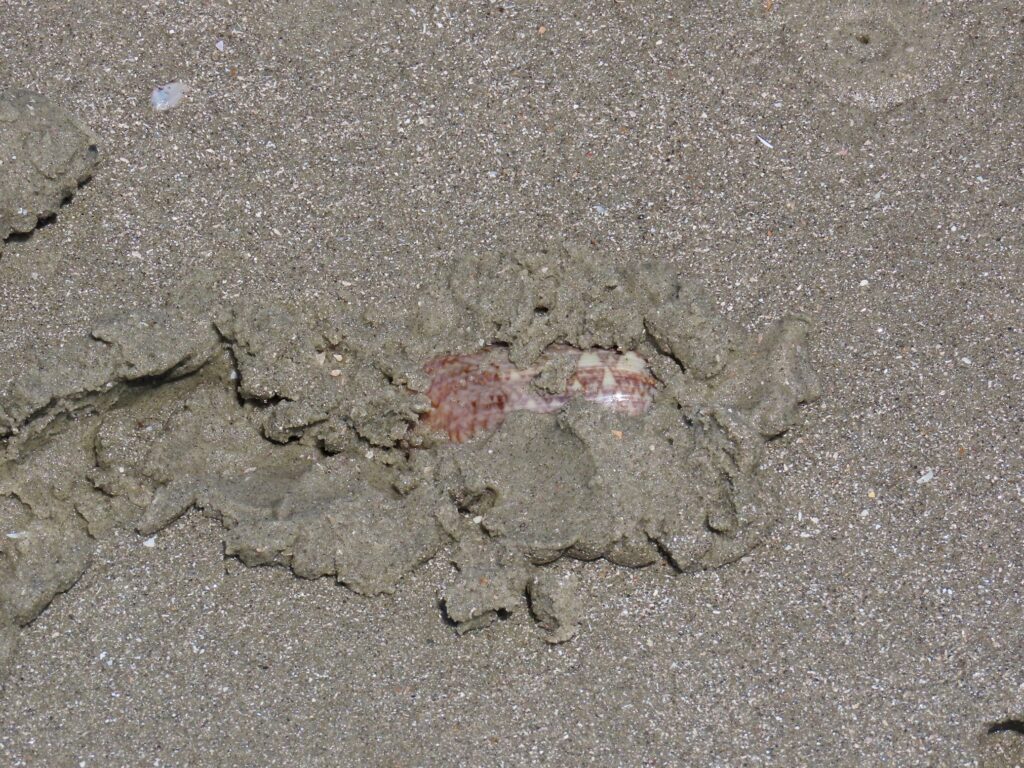
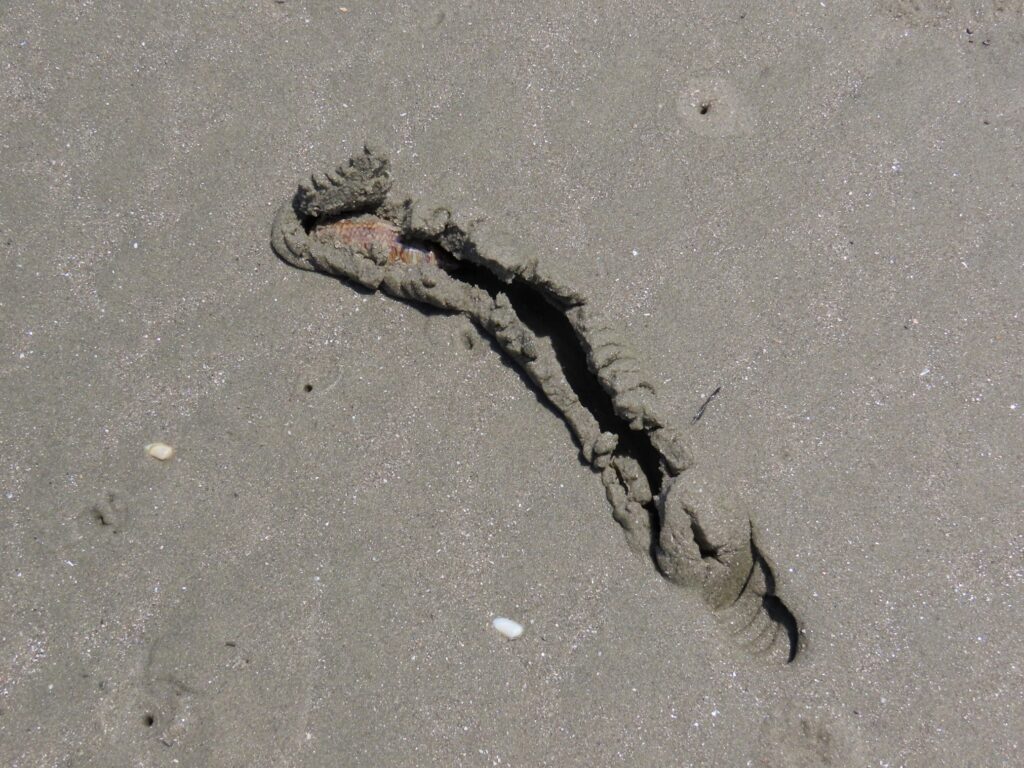
This week for Flora and Fauna Friday we find washed ashore a scribbled scroll of shell telling a tale from our natural history, the Lettered Olive (Oliva sayana).
The Lettered Olive is found from North Carolina west to Mexico living near-shore along sandy bottomed inlets and beaches. Lettered Olives are marine snails, in the Gastropod order with slugs and land snails. Lettered Olives grow up to two-and-a-half inches in length. This makes them one of the larger marine snail species found here in South Carolina. Their thumb-sized shell is pill shaped with an obtuse point on one end and a long, narrow opening, called an aperture, running almost the entire length of their shell.
Through this aperture the Lettered Olive interacts with the outside world. From the blunt end of its shell it extends its head, the tube-like siphon it uses to breathe, its sensory tentacle, and its broad, ribbon-like foot which fills the full length of its aperture. Lettered Olives are particularly abundant on the beaches of South Carolina. This is thanks to the height of our tides and the dynamic conditions of our inlets and shoreline. This concentrates the sea life that depends on shallow, sandy waters into the surf zone. Most importantly, this creates the perfect habitat for the small Coquina Clam (Donax variabilis), a favorite food of the Lettered Olive. Our Lettered Olive is a prodigious predator that patrols surf swept beach sands, plowing just below their surface in search of Coquina and crustaceans. When an Olive stumbles onto a suitable snack, it surrounds and smothers it with its sinuous sole and sinks below the sand to savor its seafood supper. Safely below the beach it slowly shreds its dinner with its rasp-like tongue, its radula, as it holds and digests it within its foot.
The Lettered Olive’s shell is unique not only for its shape but for its pattern and finish. It gets its common name from the hieroglyphics scrawled along the length of its shell. Runes written on the rolled scroll of its form tell the tale of its life, its history penned upon its very body. These glyphs are inlaid below the gloss of its glazed exterior. This uniquely pristine porcelain façade on a snail this large is thanks to the polishing performed by its expansive mantle. The mantle of a mollusk builds its shell as it grows. Most species keep their mantle tucked inside the aperture, out of harm’s way. Lettered Olives instead sheath the mount of their shell with their mantle as they burrow beneath the sand, burnishing its exterior to a high gloss and sparing the shell from the scouring of coarse sand.
Lastly, we have a pair of fun facts. The Lettered Olive was first described to science in 1834 from South Carolina by Dr. Edmund Ravenel. Dr. Ravenel was one of the founders of MUSC and one of the first naturalists to study shells in detail, a field he helped pioneered that today is known as conchology. One-hundred-and-fifty years later, in 1984, the Lettered Olive was made the state shell of South Carolina.